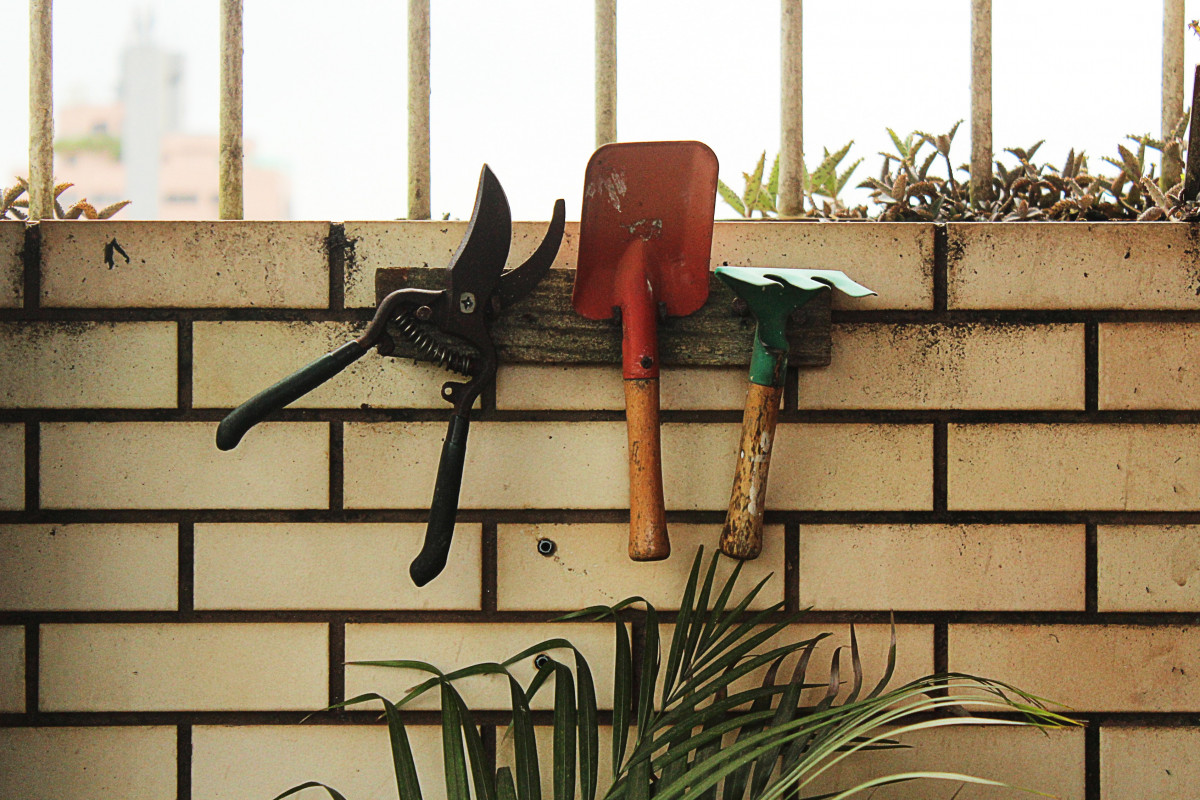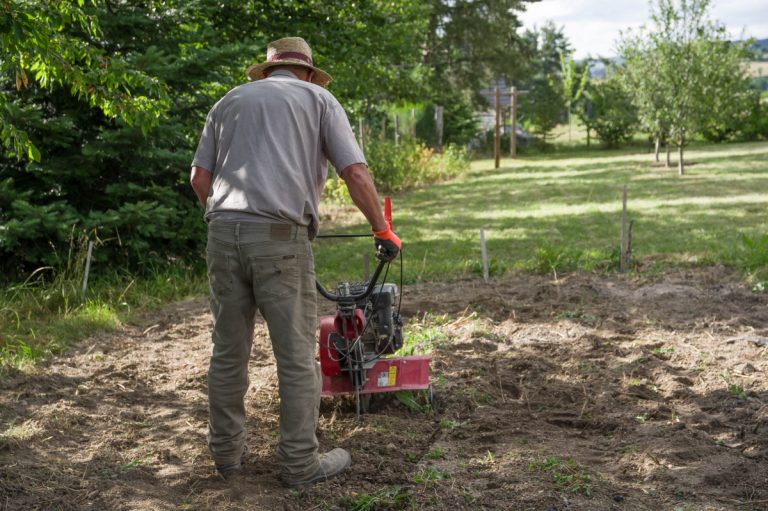Beginner’s Guide To Mastering Garden Shears 2022: Tips On Safety, Selection, Maintenance And More
When it comes to using his first garden shears, maybe every rookie gardener has some questions. Before you go searching the web, have a peek at our extensive FAQ. We’ve compiled a list of the most frequently asked questions.
Quick Navigation
What Are The Garden Shears Types?
Shears are useful horticultural tools for cutting stems and branches up to 1 inch in diameter. Don’t use the tool on branches that are bigger than it can handle. Otherwise, the blades might be damaged. Garden pruners come in a variety of sizes and styles, each tailored for a particular duty. Let’s go through the different sorts of garden shears to gain a better understanding.
✅ Best HORTICAN Hedge Shears With Straight Blade
SHARP STRAIGHT BLADE FOR PRECISION CUTS – The forged carbon steel wavy blades cut all the way to the tip and produce smoothly operated crisp cuts. The precision cuts of this tool will preserve your plant’s health. Every cut will be a joyful experience and your shrubs will grow back nicely: don’t hack away at your beautiful bushes with powered hedge trimmers!
- Basic Pruning Shears
Standard pruning shears are used to trim stems, tiny branches, and twigs up to 3/4′′ in diameter. Roses and veggie plants are examples. They are also useful for trimming groomed hedges and bushes. A tool of this kind employs two concave blades at the same time.
- Bypass Pruners
Bypass pruners are widely used. They have two blades, the top one sharpened and the bottom one not. When cutting a branch or anything else, the top sharp blade passes over the lower unsharpened blade, giving rise to the pruner’s name. This kind of shears makes precise cuts. They do not inflict crushing harm on any form of green or living plant. Bypass pruners are used equally by right and left-handed people.
- Anvil Pruners
The finest anvil-style garden shears have an upper sharp blade and a bottom heavy flat edge. When cutting, the blade falls on it. Anvil pruners are often used to clip thick branches that other kinds of pruners cannot handle. Despite their strength, these instruments are light and small. Women and others with tiny hands often utilize them.
- Ratchet Pruners
Ratchet pruners are ideal for persons who suffer from hand discomfort. People with weak hands or wounded wrists will find this style of shears quite handy and simple to operate. The tool easily handles thick stems and branches. Because of the additional portion on these shears, branches are clipped in phases rather than all at once. The “D” handle makes it more comfortable, and the safety latch adds added security.
What Are The Critical Garden Shears Parts & Components?
To understand how long handled garden shears operate, it is critical to first determine the tool’s components. The crucial pieces change depending on the kind of pruner. The following are the parts of standard bypass pruning shears:
- ergonomically shaped handles
- upper sharp blade
- lower unsharpened hook
- sap groove
- shock absorbing pad (optional)
- thumb lock (optional)
Anvil pruners have the following parts:
- upper sharp blade
- lower heavy flat edge
- ergonomic handles
- right arm, pivot, and center nuts and bolts
- gear screw
What concerns a tool with a ratchet mechanism, here are its major components:
- lower blade
- anvil
- anvil bolts
- center nut and bolt
- ratchet mechanism
- ratchet nut and bolt
- spring
- clip
- handles
How Do You Select the Best Garden Shears?
A decent set of hedge shears is essential for making landscaping more manageable and appealing. The instrument, whether long-handled garden shears or another variety, must be of high quality. How do you choose the best model? Let’s figure it out together. Here are some key characteristics to consider before making your decision:
- Left or Right Handed Preferences
If a pruner is not well-designed, left-handed individuals may find it difficult to operate. The instrument, like scissors, must be reversed. As a result, the top blade appears on the left, allowing the operator to cut the plant or branch smoothly without pulling sections off. The majority of renowned companies provide both left and right-handed variants.
In addition, when purchasing garden shears for a left-handed individual, ensure sure the blade locking mechanism is shifted to the right side. This allows the user to control it with his left thumb.
- Weight
The weight of garden shears is an essential consideration. A heavy-duty instrument may be effective, but the user’s arms may fatigue fast while using it. If you have a big yard that sometimes necessitates a lot of labor, you should choose for versions with aluminum or fiberglass handles. Those with steel handles may be too heavy for you.
- Blades Quality & Materials
When it comes to garden pruners, the quality and sharpness of the blades are perhaps the most important factors to consider. Almost all models feature razor-sharp blades. The question is how long they will remain sharp! High tempered or carbon steel blades are preferred in the best versions, with the latter being even more robust. If the blades are chrome or titanium plated, they will not rust until you sharpen the tool.
Blades come in a variety of shapes and sizes. If you generally work with branches thicker than 1/4′′, you should select serrated shears, while wavy-bladed instruments are ideal for pruning open-structured plants.
- Availability & Safety of Lock Mechanism
The presence of a locking mechanism is a significant advantage. When not in use, it keeps the shears closed. This protects the sharp blades from injury while also making them look less dangerous to others around them. If the lock mechanism is of high quality, it will be simple to use but will not function on its own while cutting, and no branches or twigs will get entangled in it. This feature is found on the majority of high-quality pruners.
- Ergonomic Comfort
The finest garden shears for grass cutting are typically quite simple to operate. However, when it comes to hand shears, the ergonomic design of the handles becomes crucial. These tools depend on your hand’s strength. As a result, it’s critical that they match the size and strength of your hand, have ergonomic grips that fit securely in your hands, and don’t create blisters.
What Are Some Essential Knowledge About Garden Shears?
- Walther Schröder of Kiel, Germany, created the first anvil pruners in 1923. “Original LWE” was the model’s name. In 1925, it became a global phenomenon.
- Cutting plants as part of gardening was popular in East Asian and European topiary in antiquity. Over 1000 years ago, they utilized specialized scissors (first garden shears) to cultivate Japanese bonsai and Chinese penjing!
- Pruners were introduced to modern Europe in 1819. The first garden secateurs were invented by Antoine Francois Bertrand de Molleville, a French nobleman.
- Scissors or Black and Decker garden shears (together with those by other manufacturers) are among the top ten most important garden equipment in the world.
- Nowadays, pruners are sometimes fitted with lights. This enables you to use the tool at night.
How To Use Garden Shears Safely?
It is undeniably vital to understand how to sharpen garden shears and how to choose the most dependable models, but being aware of safety guidelines is as crucial. Sharp items are not to be taken lightly. Remember this and follow the major safety recommendations when using garden pruners listed below:
- Safety gloves.
The first guideline is to always wear protective gloves. This manner, you’ll protect yourself against blisters and minor wounds. Choose ones that can endure being cut by sharp instruments. - Handle with care.
Never hold this instrument by the sharp end or walk about holding the handle while using it. Make sure children are not left unsupervised with these garden tools, and that the safety lock is turned on. - Hold the tool properly.
It is essential to maintain vigilance. Right-handed users must cut from right to left, whereas left-handed users must cut from left to right. When using pruners, never bend your wrist at an awkward angle; instead, maintain it in a neutral posture. Don’t attempt to catch the tool after it has fallen. Don’t contact the blades of your garden shears while cleaning them. - Use it for the intended purpose. Garden pruners should always be used as intended. Never use this tool to scrape, screw, or pry an item off or onto a surface. Also, do not use the shears to cut metal or other hard materials.
- Store properly.
Pruners will last longer if they are properly stored. After each use, clean the tool, grease it, turn on the lock mechanism, and keep it somewhere secure and dry.
How To Maintain and Oil My Garden Shears?
Punters must be cleaned and oiled on a regular basis since they rust easily. Clean the debris from the crevices with a stiff brush, then wash the blades with soapy water and completely dry the instrument. Then proceed to the oiling stage. Only a few drops of lubricating oil should be applied to the blades and pivot joints. Wipe away any excess oil with a soft cloth.
How to Sharpen Garden Shears?
Before sharpening garden shears, clean and dry the blades thoroughly, but do not oil them. Place the shears in a bench vise and sharpen the blades with a coarse diamond hand file. The file must be drawn following the curve of the blade. Repeat until a crisp edge is produced. Finally, file off any burrs that have accumulated on the blade’s backside and lubricate the blades.
How To Clean and Sterilize Garden Shears?
To clean dirt from your garden pruners, use a stiff brush and warm soapy water. The tool should then be sanitized. In a bucket, combine pine oil or bleach (0.9L) and water (2.8L), then immerse the blades in this disinfection. To expose the cutting blades to the sterilizing solution, pull the shears open. Allow the tool to soak in the liquid for five minutes. Spray the tool with clean water and allow it to dry after withdrawing it from the solvent.
Can I Use My Garden Shears for Metal Garage Works?
You may use the pruner for this purpose if it has a notch specifically intended for metal wires. Otherwise, avoid using the tool for metal cutting. This may result in nicking and blunting of the blade, which will make cutting tree branches later more difficult.
Is There Any Reason to Purchase Garden Shears with a Rotating Handle?
Pruners with revolving handles are available. They prevent friction and hand tension with repeated usage. These instruments are fantastic if you suffer from hand discomfort. Garden shears from Lowes and other versions with rotating handles are likewise suitable for both right-handed and left-handed users.
Can I Use It and Work for Pruning the Smaller Branches of Fruit trees?
The branches of young fruit trees are fragile. Sharp pruners should be used to clip little branches of fruit trees so that they do not crush but instead create exact and even cuts. Otherwise, you risk causing harm to the tree.
===> Find Even More Related Good Ideas ===>
Other Garden Enthusiast Are Reading:
✅ Trending
- All You Need To Know Before Your Garden Sprayer Purchase: The Essential And Convenient Plant Maintenance Tool FAQs 2022
- Best Tips On Herbicides Usage And Selection – All You Need To Know Before Application FAQs 2022
- Chipper Shredder Reviews 2022 – Best Electric Yard Machines For Composting
✅ Outdoor Garden Design And Tips
- 9+ Small Backyard Ponds Ideas 2022: How To Build Waterfalls & Landscaping Guide
- Inspirations For The Best Outdoor Living In Summer: Garden Style Guide 2022
- The Ultimate Guide To Budgie Aviary Set Up: Save Cost And Time 2022
✅ Indoor Design And Tips
- How To Choose The Right Log Cabin For Any Garden? (2022)
- The Loud And Clear Reminder To Get House Insurance 2022
- How To Get Rid Of Bed Bugs At Home With Bed Bug Killer 2022: Fast And Permanent Solutions
✅ Even More Great Products
- 10 Best Riding Lawn Mower For Hills: Reliable & Effective Brands To Take Care Of Your Yard 2022
- What Is The Strongest Glue To Use On Plastic? – Bonding To Metal, Wood, Toys…
- Best Tips On Herbicides Usage And Selection – All You Need To Know Before Application FAQs 2022
✅ Sustainable Lifestyle Products And Tips
- Encouraging Children To Save Our Environment: Start Eco Education At Young Age For Better Future 2022
- Where Do You Put Your Coffee On A Garden Bench? The Solution To Quality Self-Time
- Small Steps To Save The Environment Even Your Children Can Do: Good Practice To Teach Children About Conserving Resources 2022








